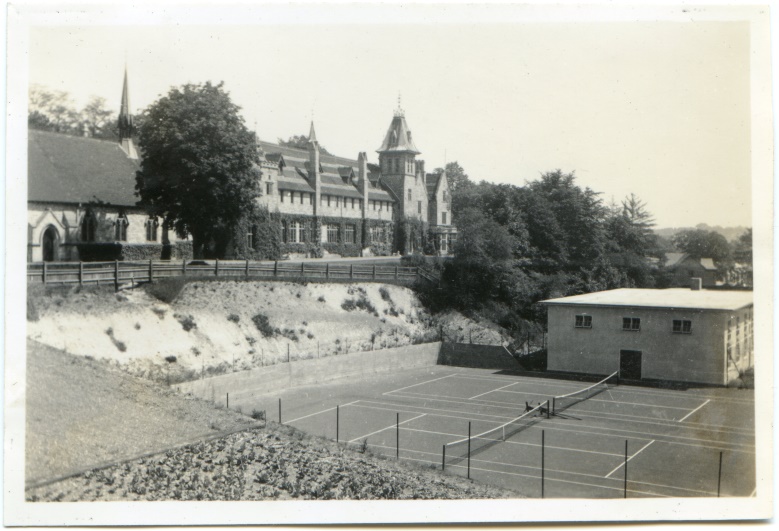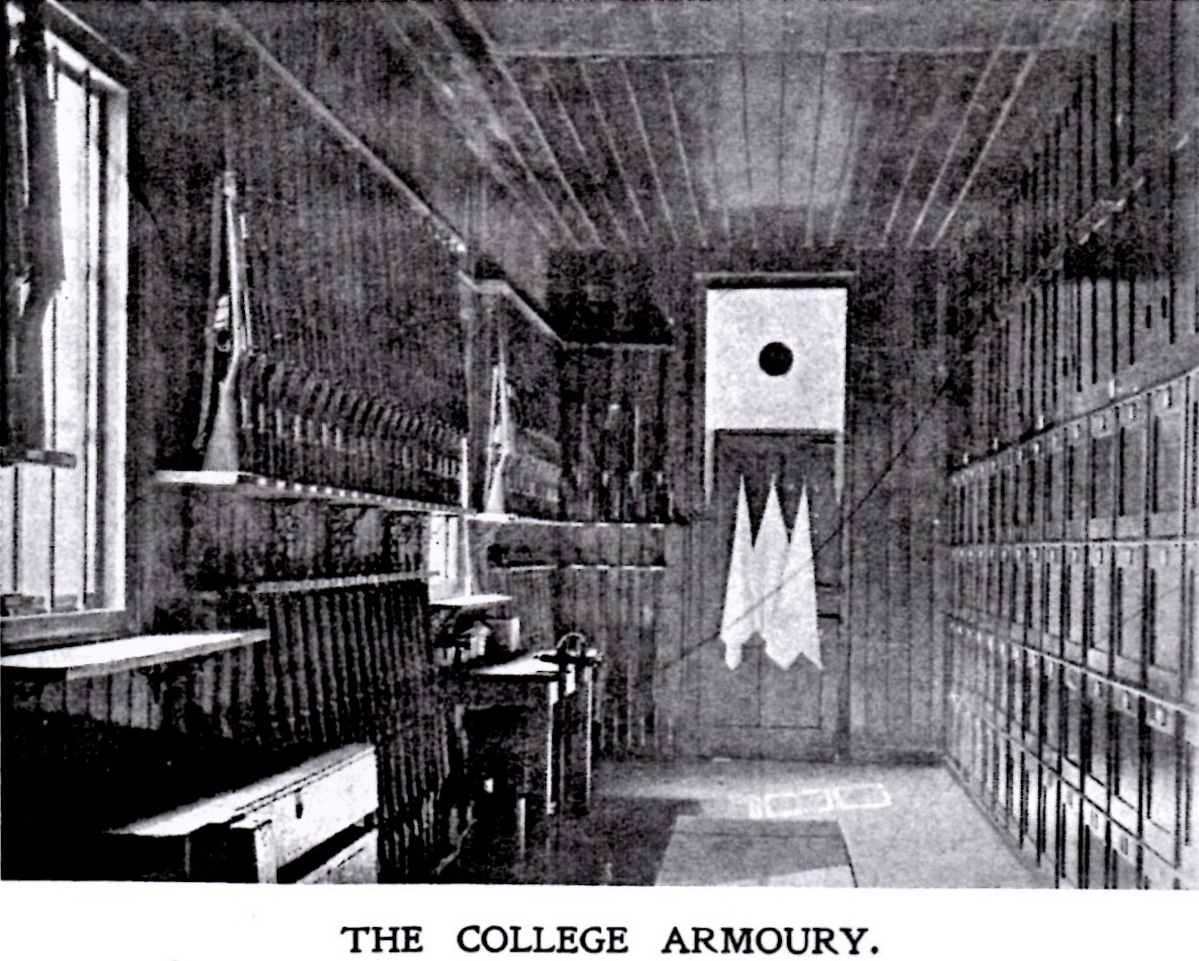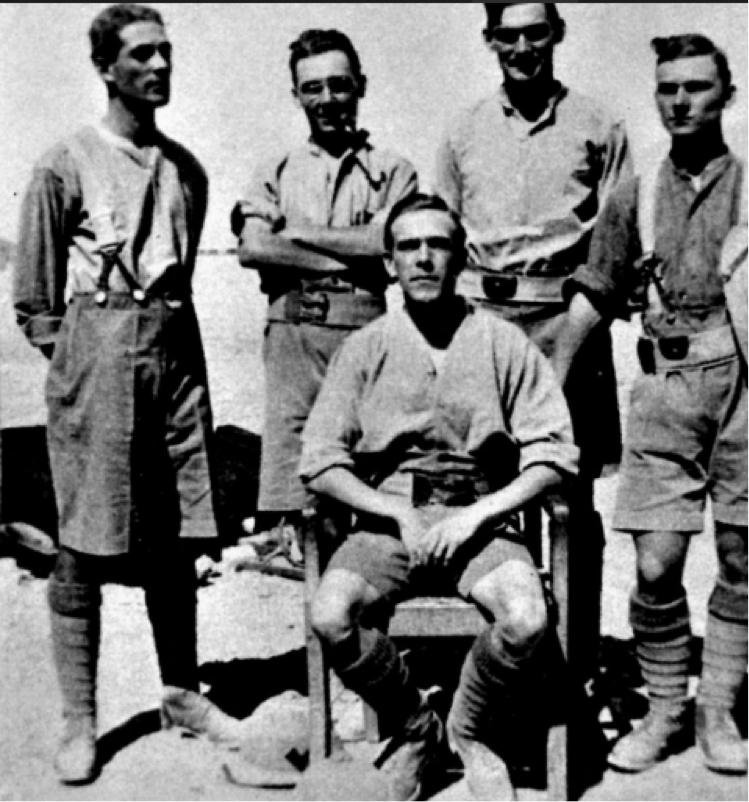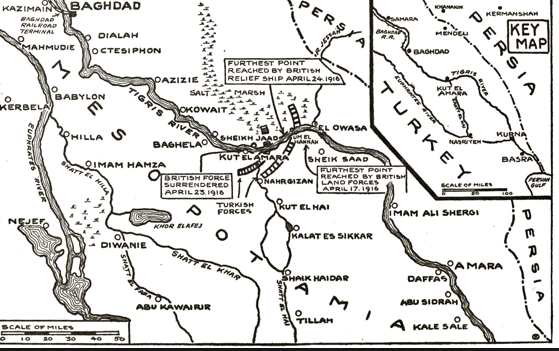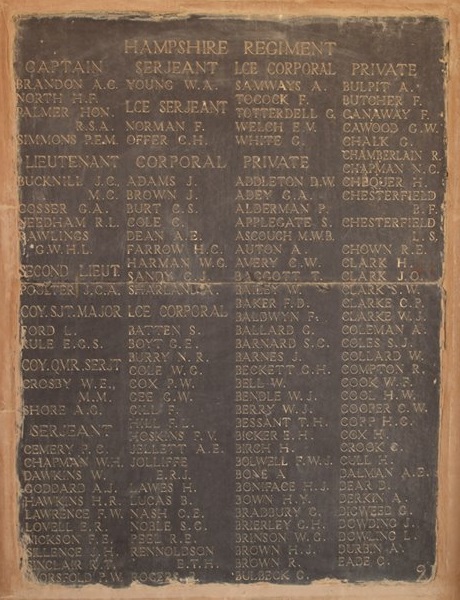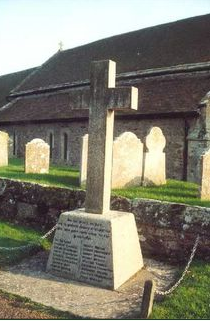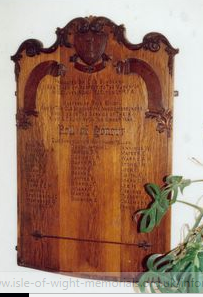Ambrose Herbert Warne
Private Ambrose Herbert Warne of the 1/4th Hampshire Regiment (T.F.) Battalion, regimental Number 1867, was killed in action, aged 22, on 21st January 1916, in Iraq, and is commemorated on the Basra Memorial.
Early Life
St Mary’s Church, Brighstone
College records tell us that Ambrose began his schooling at the National School, Brighstone before moving to the Newport Secondary School. He then returned to Brighstone to serve an apprenticeship as a pupil teacher back in his old elementary school. In 1911 he took the Senior Oxford Admission Examination. Unlike other students he did not take the Archbishops’ Examination for admission, but rather was examined by the Principal instead.
Life at College
Winchester Training College photograph courtesy of Alwyn Ladell
In his first college examinations, taken at the end of the first term, Ambrose achieved an average mark of 51.8% which placed him 29th in the order of merit. By the midsummer exams of the first year he had improved that to 21st, and by Christmas of his second year he was placed 15th, with an average mark of 64.7%. At the end of his course Ambrose was graded with A for Music, B for Drawing and Science and D for Teaching. He was awarded a Class 1 pass in his final Archbishops’ Religious Knowledge Exam.
Photograph from The Wintonian Magazine
From Winchester to Mesopotamia
I am still charmed with this wild waste country, its mountains, and upland vales and savage passes. Last Sunday I rode on mule-back up a delightful valley at the foot of Chihiltan, through rugged gorges and wide upland meadows, all a-bloom with lupin and asphodel. We rode about nine miles up, had tea beside a rushing torrent under the mountain foot and rode home. Such an Odyssey was that ride home. We were benighted far up the pass! Imagine me on a headlong mule cantering at the mule’s speed down a rocky mountain footpath, with visions of Pathan snipers at every turn! Quite a little adventure!
Before leaving Quetta they had been given a send- off which was reported by Captain Goddard.
They were paraded in full marching order, and they looked without exaggeration, a fine body of men in the pink of condition and well fit for active service. The General looked at every man individually, and made a few cheerful remarks to several on his round of inspection.
Map showing the area around Kut
The 1/4th Hampshires were one of the smaller battalions in the brigade but unlike some of the others they had a personal connection to the men besieged at Kut, as A Company was there. Ambrose would have known many of them personally. Casualties on 21st January were very high. The 1/4th Hants started the battle with 16 officers and 339 other ranks but by the end of the day numbered 3 officers and 64 men. Candler 2 described what happened to some of them on that day.
A small batch of the Hants were seen to advance at walking pace some 1,800 yards without taking cover. At 400 yards from the enemy one officer and two men were left. They walked coolly on and were within 300 yards of the Turkish trenches when the officer, the last of that forlornest of forlorn hopes, fell.
My dear principal
I am very sorry to give you ill news of the fate of our two Companies at Sheik Saad 3, near Kut-el-Amara on January 21st. The Hampshires seem to have suffered almost the worst. The Turkish Infantry are much better shots than the German, and we hear from all sides that nothing like it was ever seen in Flanders. The Colonel and Adjutant were killed. All officers and N.C.O.s being down, a remnant of our fellows reached the trenches. At this point Tarrant and Warne were killed and Oakley, R.Smith, Giddins and G Hurst wounded. Purkis and HW Rose are missing, probably losing their way in the darknessThat is all the news which I am sure you will think is quite ill news enough.
Ambrose is commemorated on the Basra Memorial, Iraq, at St Mary the Virgin Church, Brighstone, and at Carisbrooke Castle County War Memorial and at Newport County Secondary School. (See images below)
Researcher and Author: Dee Sayers
Footnotes
- Brighstone was formerly called Brixton. This appears on some of the census records. It is also sometimes written incorrectly as Brightstone.
- Candler E. The Long Road to Baghdad quoted in Crowley
- The date of death confirms that Ambrose Warne died at the Hanna Defile not at Shaikh Saad as written to the Principal
Sources
Ancestry (2018). Home page. [online] Available at: www.ancestry.co.uk [Accessed 2018].
Crowley, P. (2016). Kut 1916: the forgotten British disaster in Iraq. Stroud: The History Press.
The William Leach Collection (Various). Records of RSM W.F. Leach including the records of Mrs. E. Bowker [documents, notebooks, photographs and artefacts] The Royal Hampshire Regimental Museum, Winchester.
Memorials and Monuments on the Isle of Wight (2018). Brightstone: War Memorial. [online] Available at: www.isle-of-wight-memorials.org.uk/towns/brighstone.htm [Accessed 2018].
Memorials and Monuments on the Isle of Wight (2018). Newport County Secondary School memorial: biographies. [online] Available at: http://www.isle-of-wight-memorials.org.uk/schools/newportcountysecondarybiog.htm [Accessed 2018].
National Union of Teachers. (1920). War Record 1914“1919. A Short Account of Duty and Work Accomplished During the War. London: NUT.
Vickers, J. University of Winchester Chapel Memorial Rail image.
Wikipedia (2018). Wrotham Park. [online] Available at: https://en.wikipedia.org/wiki/Wrotham_Park [Accessed 2018].
Wikipedia (2009). File:Kut-el-Amara-map.jpg [online] Available at: https://commons.wikimedia.org/wiki/File:Kut-el-Amara-map.jpg [Accessed 2018].
Wikimedia (2016). File:St Mary the Virgin’s Church, Main Road, Brighstone (May 2016) (10).jpg [online] Available at: https://commons.wikimedia.org/wiki/File:St_Mary_the_Virgin%27s_Church,_Main_Road,_Brighstone_(May_2016)_(10).JPG [Accessed 2018].
| University of Winchester Archive “ Hampshire Record Office | ||
| Reference code | Record | |
| 47M91W/ | P2/4 | The Wintonian 1899-1900 |
| 47M91W/ | P2/5 | The Wintonian 1901-1902 |
| 47M91W/ | P2/6 | The Wintonian 1903-1904 |
| 47M91W/ | P2/7 | The Wintonian 1904-1906 |
| 47M91W/ | P2/8 | The Wintonian 1905-1907 |
| 47M91W/ | P2/10 | The Wintonian 1908-1910 |
| 47M91W/ | P2/11 | The Wintonian 1910-1914 |
| 47M91W/ | P2/12 | The Wintonian 1920-1925 |
| 47M91W/ | D1/2 | The Student Register |
| 47M91W/ | S5//5/10 | Photograph of 5 alumni in Mesopotamia |
| 47M91W/ | Q3/6 | A Khaki Diary |
| 47M91W/ | B1/2 | Reports of Training College 1913-1914 |
| 47M91W/ | Q1/5 | Report and Balance Sheets 1904- 1949 |
| 47M91W/ | R2/5 | History of the Volunteers Company 1910 |
| 47M91W/ | L1/2 | College Rules 1920 |
| Hampshire Record Office archive | ||
| 71M88W/6 | List of Prisoners at Kut | |
| 55M81W/PJ1 | Managers’ Minute Book 1876-1903 | |
| All material referenced as 47M91W/ is the copyright of The University of Winchester. Permission to reproduce photographs and other material for this narrative has been agreed by the University and Hampshire Record Office. | ||



